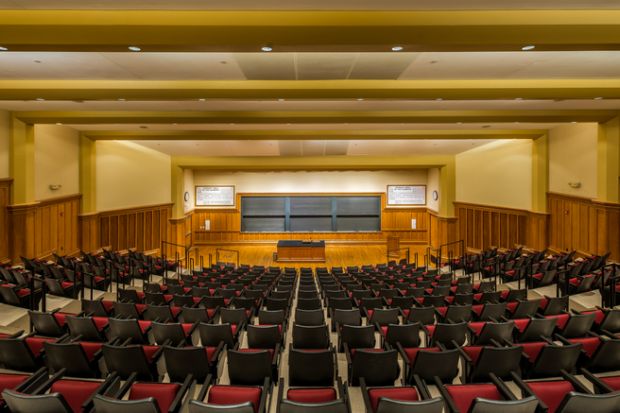Most full-time US college students do not attempt enough credits to finish a bachelor’s degree within five years, the sector’s leading data collection agency has concluded.
Students generally need 15 credits a semester to finish within four years, and most don’t even take an average course load of 12, according to the analysis by the National Student Clearinghouse.
The findings add an important new dimension to the better-known reality that barely half of all US undergraduates seeking a four-year degree manage to finish within six years, said an author of the report, Afet Dundar, director of equity in research and analytics at the Clearinghouse.
The report also quantified the percentage of completed credits, finding that US students earn roughly 75 per cent of the credits they attempt. Both sets of measures showed significant racial gaps, with white students ranking behind ethnic Asian students and ahead of Hispanic and black students on both credits attempted and share of credits completed.
There were probably many complicated reasons for low student course loads, Dr Dundar said, including the large numbers of students who are working jobs, caring for family, or facing any number of other stresses in their lives.
And it was not necessarily a bad idea for some number of students to reduce their classroom burdens, especially early in their college careers, she said.
But looking harder at course loads could prove valuable for institutions, Dr Dundar said. Unlike interventions that focus on low college completion rates, solutions that attempt to address low course loads would have the advantage of identifying problems and offering assistance while the students are still enrolled, she said.
“They are good measures for practitioners to look at when it’s not too late,” Dr Dundar said.
The Clearinghouse is a non-profit point of contact that nearly all US institutions use for assembling their collective data in areas that include enrolment and degree completion. Its report on course loads was based on data from more than 900,000 students at 342 institutions in the 2019-20 academic year.
The Clearinghouse does not have data to show whether the problem of low course loads is recent in US higher education or a longer-term phenomenon. The analysis also does not address potential causes, Dr Dundar said, such as institutions chronically unable to meet student demand for particular courses, or intentionally advising students to try lighter workloads.
The matter of low course loads is probably something with such varied causes that individual colleges and universities wanting to address the matter will need to look closely at their own students and situations to identify solutions specific to their environments, Dr Dundar said.
And while institutions might save some money when students pay for a semester but then take reduced course loads, there’s no evidence that any of them are purposely trying to hold down class registrations, she said.
Register to continue
Why register?
- Registration is free and only takes a moment
- Once registered, you can read 3 articles a month
- Sign up for our newsletter
Subscribe
Or subscribe for unlimited access to:
- Unlimited access to news, views, insights & reviews
- Digital editions
- Digital access to THE’s university and college rankings analysis
Already registered or a current subscriber? Login








